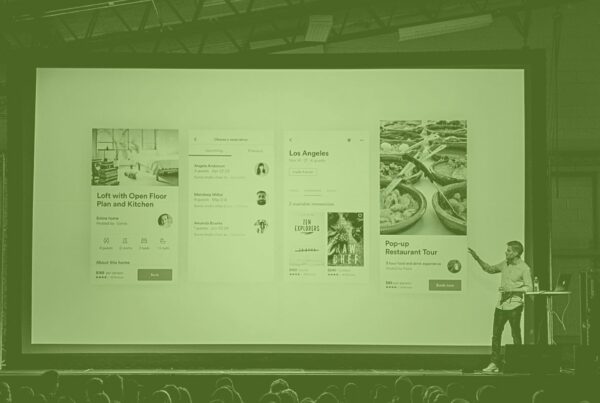How much free time do you have each day? Do you even know what the term “free time” means anymore? If you’re like most Americans, probably not, and the people you email are in the same boat. Very few people know how to effectively email busy people, and it shows – like me, you probably zip through your inbox each morning, archiving or deleting dozens of emails without ever reading past the subject line.
But then there’s that one email – the one that makes you pause as you go down the list, checking off boxes or hitting the delete key. The one that you open up and actually read. The one that maybe even makes you hit “reply.”
Keep reading to learn how to write that email.
A Few Statistics to Remember
Email is an amazing invention. We no longer need to plan out our communication long in advance; instead, we can simply jot out an email and fire it off. Almost instantly, it arrives in your contact’s inbox.
But I hope you aren’t doing this when you email busy people. You need to put at least a little more thought into these messages. Consider these statistics from Convince & Convert:
- 21% of email recipients report messages as spam, even if they know they aren’t.
- 43% of recipients mark certain messages as spam before even opening them, based solely on who the message is from and/or what the subject reads.
- 30% of email users change email addresses each year.
- Individuals below age 25 prefer text messages to emails.
Eye opening, right? When you combine these statistics with an on-the-go culture that doesn’t have time to think about anything for more than a few seconds, it’s clear that you must write your messages with busy people in mind.
Start with Your Email Address and Display Name
If the statistic above is accurate, using a generic or unrecognizable email address could ruin an email before your recipient even opens it.
For best results, make things as transparent as possible. If your email address or sender’s name sounds like spam or like something that’s not personal, try something else. Email recipients want to hear from a person, not a computer.
Spend Time on Your Subject Lines
Think about it. Subject lines are the first thing email recipients will see. Just because I’m advertising a sale, have great news to share, or use ten exclamation points, it doesn’t mean my recipient will share that enthusiasm.
I try to remember that my email recipients are busy, just like I am. If you want to capture a piece of their valuable time, first impressions are going to count. Here are some ways to make your message meaningful to the recipient, using just the subject line:
- Personal references. If you’re writing a single email to someone, use what you have in common to pique their interest. A subject line referencing a mutual contact, such as “John wanted me to reach out about an opportunity,” is bound to make a better first impression than the generic “writing to check about a business opportunity.”
- Sales language. If something sounds like a sales pitch or offers something that’s too good to be true, it’s overdone. This generally lands emails in the spam or promotion category.
- Simplicity. Keep your subject line short and simple. Remember, Gmail cuts off a subject line at about 70 characters, and iPhones cut them off around 35!
- A brief synopsis. Let your reader know what the email is about before they open it. Show the value of the connection in the subject line. Even better, use the word “quick” to let them know that you won’t take too much time away from what they’re already doing.
Subject lines matter more than anything else in your email, and because of this, they may take more time to craft then the actual email message itself. When you’re writing an important email, make sure you allow yourself an ample amount of time to craft a great subject line.
Keep it Concise: The 5 Sentence Rule
If your recipient actually takes the time to open your email, congratulations! You’ve passed the first test. Now, you need a concise message that compels them to respond, or take another desired action.
To do that, don’t just start gushing information. You may not be writing an essay (and I hope your email isn’t that long) but you do need to present your case in an organized fashion.
Many professionals swear by the five sentence rule. Stick to five sentences (or less) in order to show respect for both your own time and your recipient’s time. Boil your message down to the barest essentials: who you are, what you want, why you should get it, what they get out of it, and when you need it by.
Of course, there will sometimes be cases where you can’t fit your email into a five-sentence format, and that’s fine. But if you start framing your emails this way, you will get your point across in the most concise way possible, which is especially important when you email busy people.
The Etiquette of Following Up
No one wants to feel harassed, but we all know the importance of following up. When someone sends me “reminder” messages (especially reminders for messages that I was less than interested in during round one), I tend to get annoyed. If I ignored you the first time, chances are, I’ll ignore you again.
But there are a few ways you can actually follow up without annoying your contact. Here are my favorite techniques:
1. The One-Liner
You better believe it – If you’re sending emails using the five-sentence rule, I hope you’re using the one-line followup. It simply involves sending your email again, with the original body intact, with a single line above asking if the recipient is interested in the following opportunity. No bells, no whistles, just pure simplicity. Your more straightforward, to the point contacts are sure to appreciate this, and it compels a simple “yes” or “no” response.
2. The Value Add
If it’s been a week or two since your original email, maybe something worth mentioning has advanced the project in the meantime. If you can add value to your original message in the follow up, go for it. This has worked especially well in my experience with journalists, who are working under deadline and may need a little extra push to cover your pitch.
3. A Dash of Humor
If you have an opportunity to interject a little humor in what could otherwise be a bland follow up, go for it. This may have varying results, but in my experience speaks to more easy-going, disorganized, creative types.
At this point, you wait. If you don’t hear back from your recipient, unless this is something extremely important or they have already expressed interest in the past, I would stop following up. I don’t want to be annoying or worse, reported for spam.
Email Busy People: A Recipe for Success
Here’s your action plan for how to email busy people without getting ignored. Over time, you may come to adapt this recipe to suit the kinds of people that you email or the opportunities you are writing about, but it’s a great place to start.
- Ensure that your email address and display name won’t send up any red flags. Try to be as recognizable as possible.
- Craft an irresistible subject line. This is optimally under 35 characters so that it is completely visible on iPhone screens.
- Stick to the five sentence (or less) rule. Make sure to make clear who you are, what you want, why you should get it, what they get out of it, and when you need it by.
- If you need to follow up, judge what kind of follow up your contact might respond best to, and only follow up one time.
What do you do differently? Share your favorite strategies for emailing busy people in the comments below.









